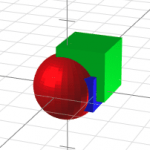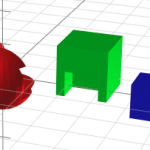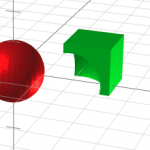Historically Constructive Solid Geometry (CSG) covers three main boolean operations:
- union
- difference
- intersection
like with Set Theory or more known when using Venn diagrams.
Brian Spilsbury started to look at 3D meshes for his JSxCAD library and how to process them: much closer to actual use cases of composing solids together and incorporate physical reality that two solids cannot occupy the same space at the same time while still unite or combine their shapes somehow.
He came up with the concept disjointed assembly of solids, which has the advantage of preserving the solids integrity in order to maintain individual information of material or colors per solid, and only change their shapes to align seamless to each other.
Disjointed Assembly or Exclusivity
The disjointed assembly or exclusive series of a, b and c like
a = sphere().color(red)
b = cube(1.5).color(green).translate([0.5,0.5,0.5])
c = cube(1).color(blue).translate([0.5,0,0])
may be written as
exclusive(a,b,c) = [ difference(a,b,c), difference(b,c), c ]
The parts no longer intersect any space of each other, and seamlessly can be fused now together. The order of such exclusivity matters now: the first solid in line is changed by all succeeding solids, and each next solid in the disjointed assembly the same, whereas the last solid remains untouched, hence, exclusivity with ascending order, the last dominates most.
Alternatively, exclusivity with descending order:
exclusive(a,b,c) = [ a, difference(b,a), difference(c,b,a) ]
and then a remains untouched, and all succeeding parts are dominated by the preceding ones.
While union(), difference() and intersection() are base functions handling solids, exclusive() introduces a lightweight approach to handle grouping of multi-material CSG solids by having the parts accessible individually afterwards.
Support
Last update 2019/04/19:
- OpenSCAD:
exclusive()may be written as a module:
module exclusive(order="asc",explode=[0,0,0]) {
for (i = [0:1:$children-1])
translate([explode[0]*i,explode[1]*i,explode[2]*i])
if(order=="desc")
difference() {
children(i);
children([i-1:-1:0]);
}
else
difference() {
children(i);
children([i+1:1:$children-1]);
}
}
exclusive(explode=[3,0,0]) {
color([1,0,0]) sphere($fn=32);
color([0,1,0]) translate([0.5,0.5,0.5]) cube(1.5,center=true);
color([0,0,1]) translate([0.5,0,0]) cube(1,center=true);
}
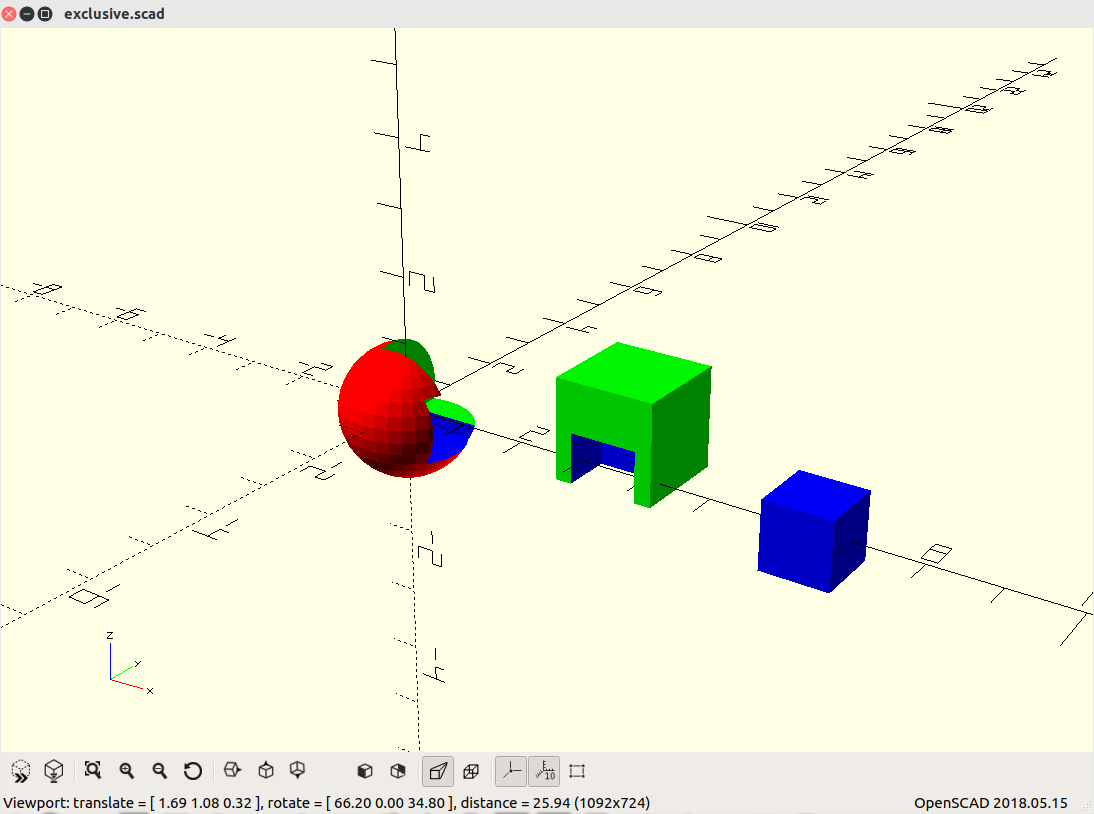
- OpenJSCAD: not yet, you can easily write a function to handle an array of solids, and creates
difference()operations to each other. - JSxCAD:
assembly()with ascending order implied, means, the last object is most dominant. - Unreleased/Unnamed CAD (which I currently work on 2019/04):
exclusive()available, with optional last argument options withorder:either"asc"(default) or"desc"like:exclusive(a,b,c);exclusive(a,b,c,{order:"desc"});
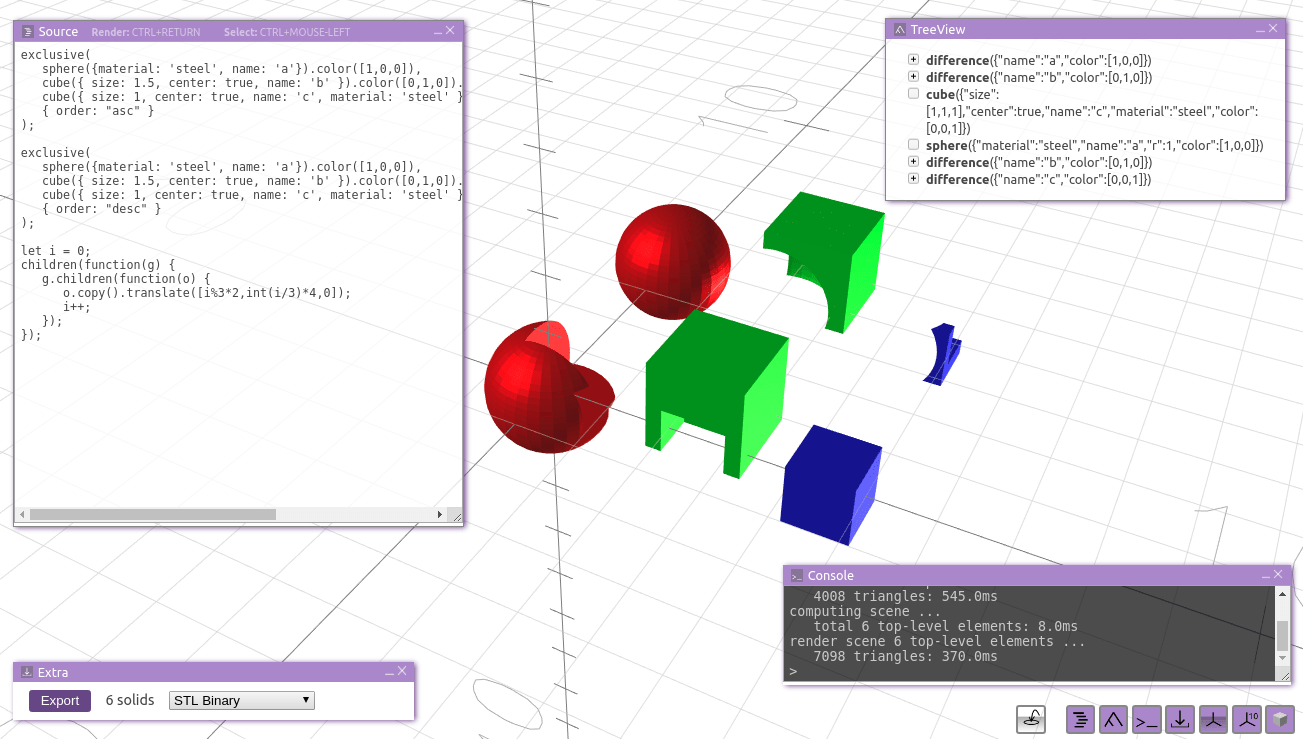
That’s it.

